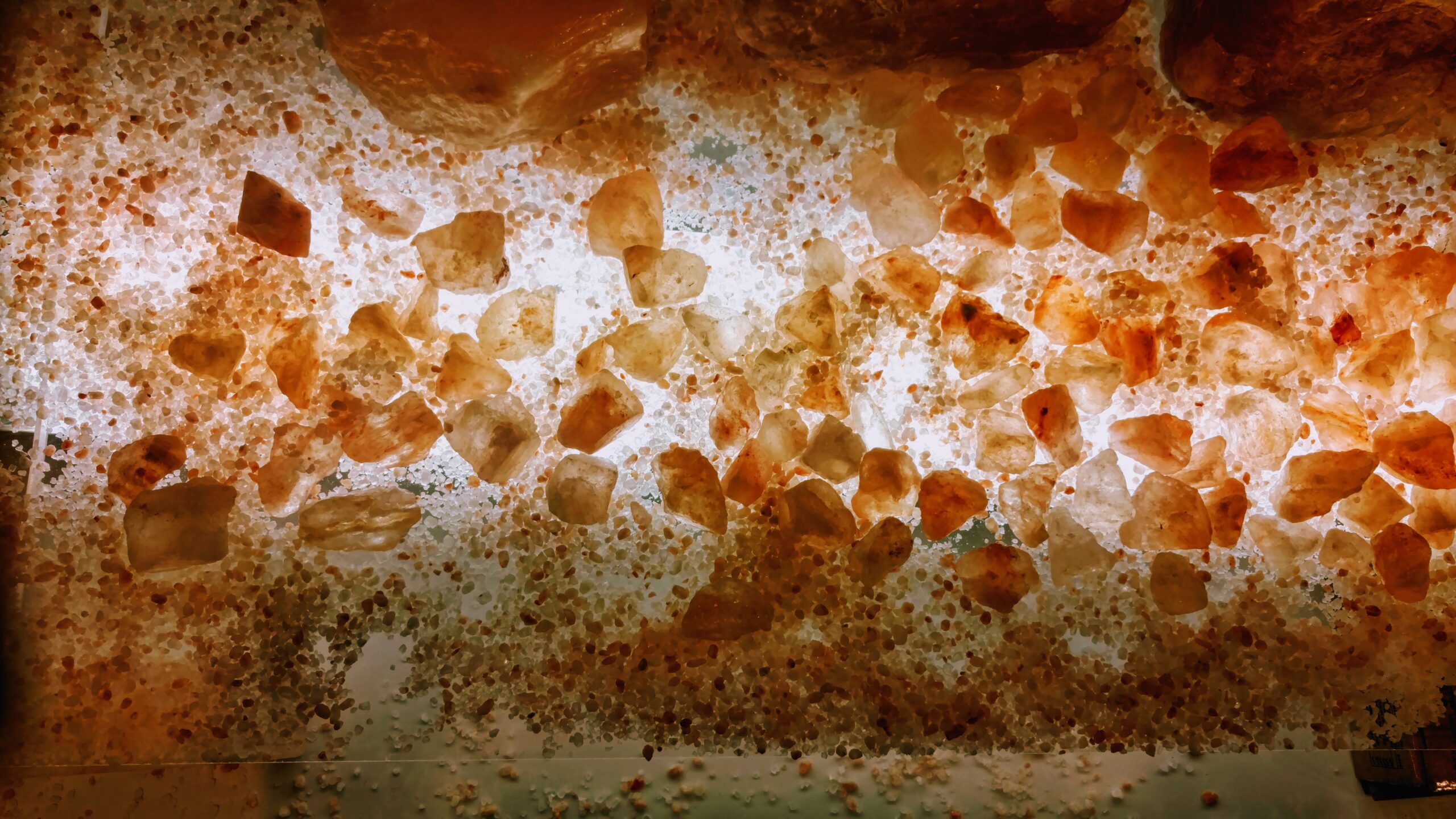If you’ve followed me in any way, shape or form over the past decade, you likely know what my #1 salt choice is.
But if you’re new around these parts, this is a great blog post about my salt choice and why I use the salt I do, and what I think about other available salt choices.
I’ve amassed a collection of nearly 20 different salts, each carry unique properties and purpose. While there is one salt that is my standard to-go, I also use a variety because different salts do different things, like enhance flavor, add texture, counteract bitter or even balance out sweet.
When choosing a salt, there are a couple of items to keep in mind:
- Purpose – salt enhances flavor, but when and how you use a salt can transform a dish from good to wow.
- Sourcing – where is the salt from?
- Processing – have minerals been removed, what has been added (ant-caking agents or iodine) and was the salt bleached?
Table salt is the basic white salt common in most homes and on the table in restaurants. It’s been stripped of minerals, stuffed with iodine, often bleached and an anti-caking agent added to help prevent clumping.
Kosher salt is an all purpose salt many chefs use. The grains are a little larger than a typical table salt and usually not iodized. To be truly kosher the package will need to say ‘kosher certified.’
Sea salt will deliver somewhere between “12-24 trace minerals. Sourcing is important because our seas are more polluted than ever and nanoplastics are a becoming a huge concern. Plastics in our body disrupt the composition and diversity of our intestinal microbiome—home base of our health!
Himalayan pink salt is my number one salt choice for an all-purpose salt. It was in the oceans millions of years ago (before plastic was even invented) so it’s free from nano-plastics and pollution that plagues current sea salt. The pink salt also carries 84 trace minerals with it, so your body is getting something it needs and recognizes. These trace minerals gives it the famous pink hue.
Celtic Gray Salt is harvested from Atlantic tidal ponds off the coast of France. The gray color comes from the minerals that are left behind when the sea water evaporates. It’s boasts a larger crystal so I enjoy using this in my fermented foods or on grilled meats and veggies.
Finishing salts are exactly like they sound, they ‘finish’ a dish. Add a flake or two on top of your completed dish, including desserts, to add texture (crunch) and a bold snap of flavor and dramatic color. Most of my salts are finishing salts.
- Maldon – is the leading, premier finishing salt harvested in the English town of Maldon. The flakes are shaped as pyramids and are unrefined.
- Fleur de sel specifically from the coast of Brittany and is harvested from evaporated sea water. This salt is often described as smelling like and tasting of the sea.
- There are a variety of other finishing salts like Portuguese cream salt, a beautiful and yes, creamy, finishing salt, black lava salt which offers a slightly smoky, mineral-rich essence and red Hawaiian salt which is iron-rich and can offer a hint of nuttiness.
From these basic salts you’ll find countless other versions that have been flavored with herbs, spices, smoke or citrus – think lemon, lavender or chili peppers.
As a general rule I avoid table salt as much as possible. The body doesn’t recognize this as a ‘food’, so it fights it with inflammation. Look for salt with color or a hue to it as these are a sign of minerals still intact.
When you take control of the food you can affect (what you use and eat in your own home), you can worry less when eating out.
What salts do you keep in your pantry?

